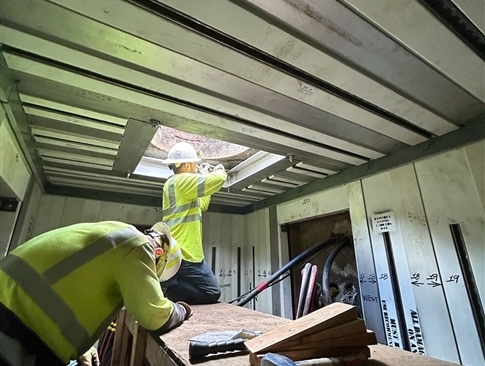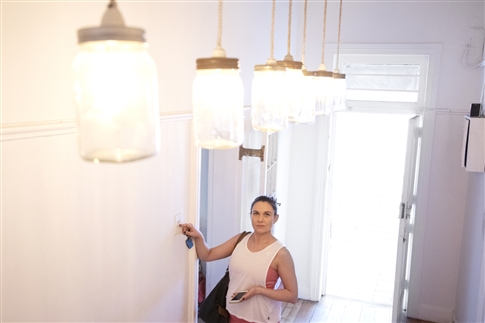Upgrades to Eugene's downtown electric network continue
April 18, 2024
•
Robyn Smith, EWEB Communications

Have you ever wondered what’s underground in downtown Eugene? While we can’t speak for everything that’s down below, we can tell you a little about EWEB’s intricate downtown electrical network, which is connected by a series of vaults beneath the city’s streets.
Underground electric cables deliver power to downtown Eugene businesses and homes. A cable vault is typically 8 feet by 13 feet across and 9 feet high and made of concrete, rebar, and steel I-beams. The vaults allow access to the underground cable system for repairs and routine maintenance, and they’re typically beneath the road, at every intersection and mid-block in downtown’s core.

Picture the inside of a downtown electric vault before the installation of the new structure.
You may have noticed construction this week on the corner of 7th and Pearl Street. Crews replaced a corroded, aging vault with an innovative, new Voltek vault. The Voltek design allows for the new infrastructure to be built inside the existing aging vault. We’re able to install the new vault while the cables are still energized, minimizing disruption to customers and traffic while cutting construction time in half.

This is a picture of the installation of the Voltek vault. The new structure is designed to be built inside the older infrastructure, saving time and expense.
Traditional vault replacement would require de-energizing the power supply and road excavation, but EWEB was able to avoid those constraints with the Voltek installation. This method is also a fraction of the cost of a traditional vault replacement. This new infrastructure will provide reliable and safe access to the underground cable network for the next 50 years and beyond.

Picture of rusty high beams that have been removed from the vaults and replaced with stainless steel beams, which will not rust.
Several of these vaults were installed last year in the downtown network and at least one more is scheduled for replacement this year. The vault replacements are a part of EWEB’s major infrastructure investments through our Capital Improvement Plan for rehabilitating, replacing, and installing new infrastructure.








